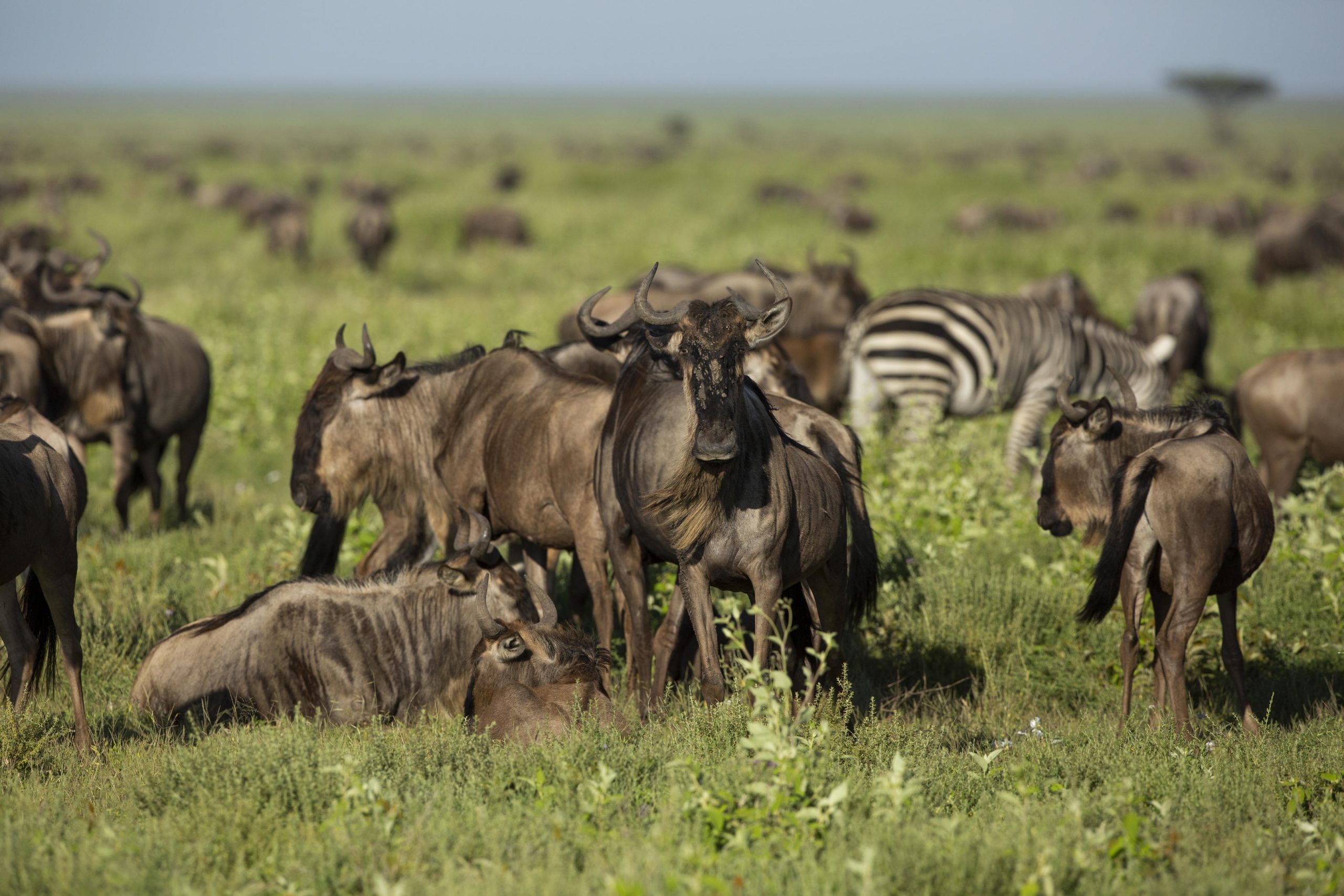Wildebeest migration safari is a bucket-list experience for nature lovers and wildlife photographers alike. This annual event, featuring over a million wildebeests along with zebras and gazelles, is one of the most incredible spectacles on Earth. However, timing, location, and planning are essential to fully enjoy this awe-inspiring phenomenon. Here’s a step-by-step guide to planning and booking a wildebeest migration safari with essential tips and insights.
1. Understanding the Great Migration: What to Expect
The wildebeest migration is an epic journey that circles Tanzania’s Serengeti National Park and Kenya’s Maasai Mara. Each year, this migration follows a natural loop, with the herds moving in search of fresh grazing. The migration is continuous, but specific months bring unique events, such as river crossings or calving seasons.
- River Crossings (July – September): The Grumeti and Mara River crossings are iconic parts of the migration, where thousands of wildebeests navigate predator-filled waters.
- Calving Season (January – March): In the Southern Serengeti, herds gather in Ndutu for calving season. This is the time to witness newborn calves and an abundance of predators.
Pro Tip: Research these migration periods so you can decide which part of the migration you most want to see!
2. Best Time to Go: When to Book Your Safari
Due to the popularity of this natural event, early booking is essential. The migration varies depending on weather patterns, but a general timeline can guide your planning.
- Peak Season (July – September): This is the high season for river crossings, so book at least a year in advance. Camps and lodges fill up quickly due to high demand.
- Green Season (December – March): For calving, visit the southern Serengeti. You may get more availability and lower rates compared to peak times.
- Shoulder Season (April – June & October – November): A quieter time to witness the migration without the peak-season crowds, although some camps may be closed during the heavy rains in April and May.
3. Choosing Your Safari Destination: Serengeti or Maasai Mara?
Both the Serengeti and Maasai Mara offer a front-row seat to the migration, but there are key differences between the two.
- Serengeti National Park (Tanzania): The migration begins and ends here. It’s larger and less crowded than the Maasai Mara, with excellent viewing areas like Ndutu (calving) and the Grumeti River (crossing).
- Maasai Mara (Kenya): Known for dramatic river crossings along the Mara River. The Mara offers excellent wildlife viewing but tends to be more crowded during peak migration.
4. Choosing Accommodation: Camps vs. Lodges
Safari accommodation can vary from rustic tented camps to luxurious lodges. Here’s a look at the main options:
- Mobile Camps: These camps follow the migration, offering a close-up view of the wildebeests. Mobile camps are ideal for an immersive experience but may be more basic in amenities.
- Permanent Lodges: Known for more luxury and facilities. While they don’t move with the herds, lodges near prime locations like the Grumeti River or central Serengeti still provide great access.
- Luxury Camps: For a unique experience, some high-end camps offer exclusivity, private guides, and upscale amenities for a more personalized safari.
Pro Tip: Book early if you prefer specific lodges or camps, especially for peak seasons.
5. Booking a Reputable Safari Operator
Selecting a trusted safari operator is essential for a smooth and enjoyable experience. Look for operators with knowledgeable guides, good reviews, and experience with migration tours. Many operators offer all-inclusive packages covering accommodations, meals, transport, and guided tours.
- Reviews and Ratings: Online reviews can provide insight into the experiences of previous guests.
- Certified Operators: Ensure your operator is certified by relevant tourism authorities in Tanzania or Kenya.
- Local Operators vs. International: Local operators are often more affordable and provide an authentic experience, while international operators may offer premium services.
6. Essential Tips for Your Migration Safari
- Travel Insurance: Given the remote locations, it’s wise to invest in comprehensive travel insurance covering health and emergency evacuation.
- Packing Essentials: Bring quality binoculars, a good camera, safari-friendly clothing, insect repellent, and sun protection.
- Visa and Health Precautions: Both Kenya and Tanzania require visas. Check health requirements, including vaccinations for yellow fever and malaria prevention.
7. Budgeting for Your Safari
A wildebeest migration safari can vary widely in cost depending on the season, choice of accommodation, and included activities. Here’s an overview:
- Budget: Basic camps with shared facilities, costing $250–$500 per day.
- Mid-range: Comfortable lodges with en-suite facilities, around $500–$1,000 per day.
- Luxury: Upscale lodges and exclusive camps, from $1,000 per day and up.
8. Booking Your Wildebeest Migration Safari
To simplify your experience, booking a tailored migration safari package is a great option. Packages can cover all your needs, from accommodations to guided game drives. Working with experienced safari operators like Ron Adventure (specializing in Serengeti and Maasai Mara safaris) can make your booking hassle-free, ensuring a well-planned itinerary that aligns with your budget and migration goals.

